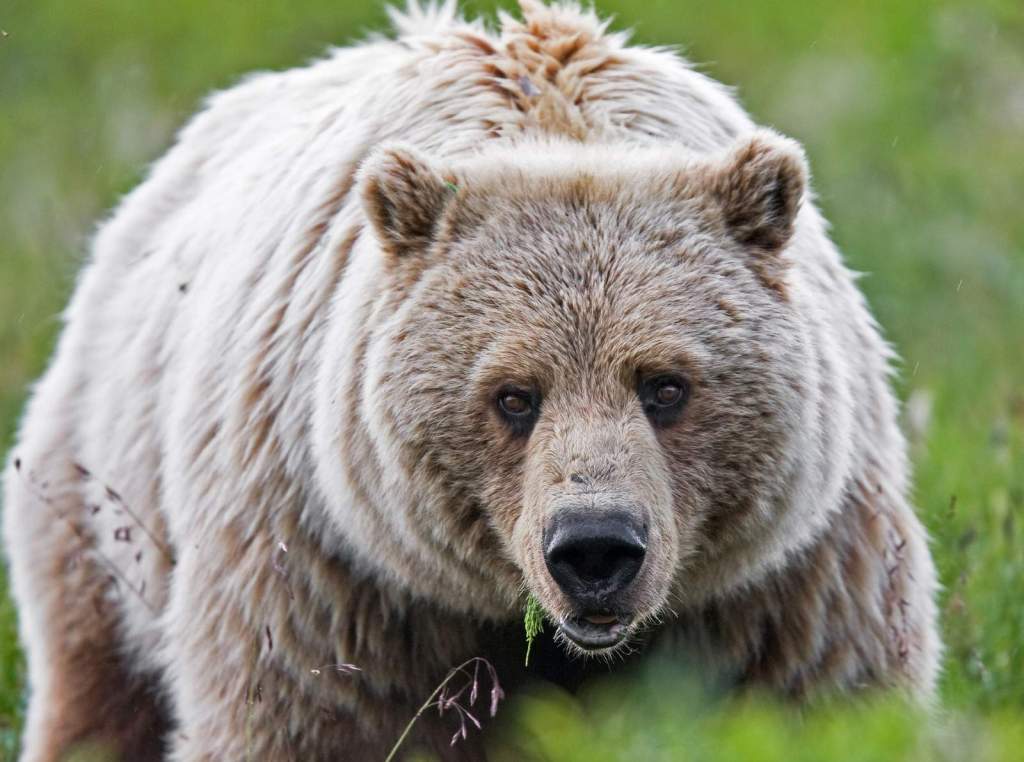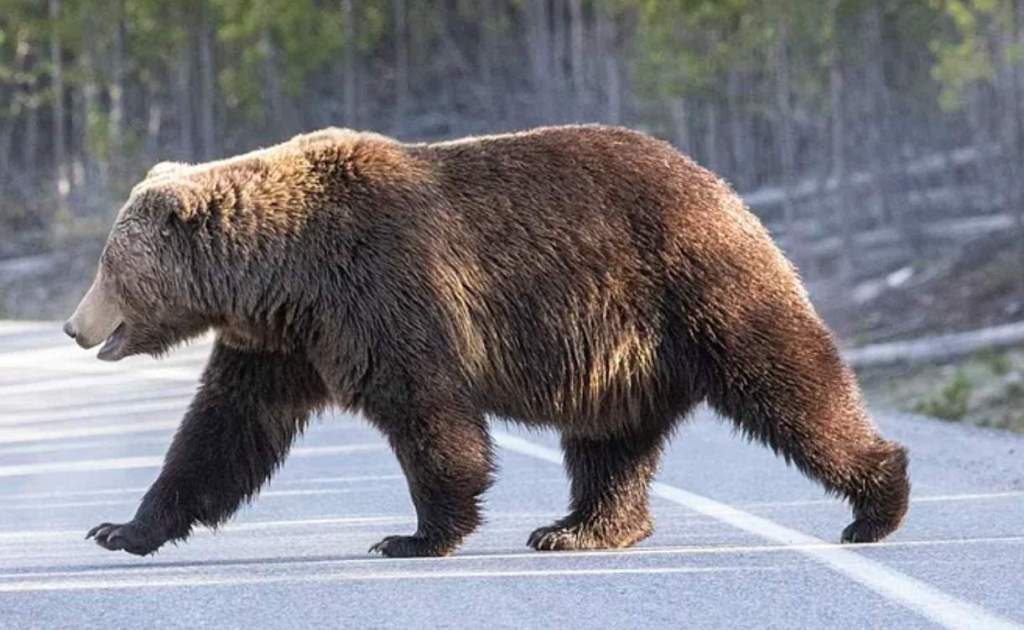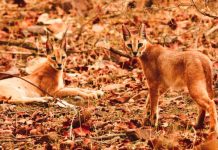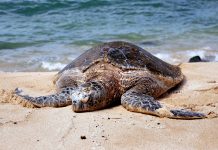Identification: Grizzly bear has shaggy fur, especially on their shoulders and flanks; their front claws are longer than their hind claws, and their hind feet are longer than black bears. The color is brownish-yellow; the back and legs are darker; the hair is long and reddish brown in color.
Other Name: It is also known as the North American Brown Bear or simply the grizzly.
Range: From the Rocky Mountains in Utah to the Alaskan Arctic. Two closely related species are found in the Southern Rockies and Norton Sound, Alaska, while a smaller relative, the Barren-ground bear, U. richardsoni Reid, ranges from Hudson’s Bay to the Mackenzie and northward.
Weight: Grizzly bears are generally bigger and heavier than other bears. As reported by the U.S. Statistical Bureau, adults in the 48 contiguous states weigh between 200 and 300 pounds (110 and 160 kilograms), while adults in the 50 contiguous states weigh between 110 and 160 pounds. A light brown or nearly black coloration is possible depending on their coloration.

Description: The grizzly bear is an enormous brute that is heavy and lumbering. It is easily the largest and most ferocious bear in any part of the world. Today, he seldom attacks men except in self-defense. In the land where grizzlies are found, only those beasts survive and excel at keeping out of sight.
Wildness has therefore served the grizzly better than strength and courage in the struggle for existence. He still finds his mighty muscles useful in the matter of making a living; there is nothing in his country that the grizzly cannot capture and carry away, except the cougar. Indians and certain old-time hunters claim that a cougar will attack and annihilate a full-grown grizzly.
However, beyond their stories, there seems to be no evidence that a cougar ever killed a grizzly who was too mature to be called a cub. In the early days, grizzly bears hunted bison in the Rockies foothills. It is said that one killed and dragged off an old bull bison weighing one thousand pounds or more.
At the present time, when the grizzly wishes to hunt after big game he generally targets the horses and cattle owned by the herders, and so gets disliked. He also hunts deer and wapiti and in the northern part of his range moose.
But he lives to a large extent on much humbler fare; rambling among the crags, with a low-hung swinging head, he listens to big game but he usually hunts the horses and cattle owned by the herders, and so gets disliked. He also hunts deer and wapiti, and in his northern range, occasionally moose. But he lives on much humbler fare; rambling among the crags, with a low-hung swinging head, he listens for mice in the grass and digs them out with claws fashioned to kill an ox at a blow.
He also eats insects, berries, and wild plums, and munches on green grass in the meadows. The cubs are said to be as funny and amusing as young bears of any sort. Being less unwieldy than the old ones, they frequently climb trees. When an old grizzly establishes a hunting range for himself, he writes his challenge with his massive claws and tusks. He writes it on a pine trunk as high as he can reach.
His tremendous strength is generally known and respected by other four-footed hunters, who might otherwise poach on his preserves. If another bear wandering in search of better hunting grounds comes along this path, he is certain to see these warning claw marks. Rising on his hind legs, he strikes the bark in a similar manner. If he fails to scar the trunk as high as the other bear has done, he continues his travels, leaving the first in undisputed possession.
But if the newcomer finds that he can reach as high or higher than the one who first left his challenge there, he is more than likely to remain in the immediate vicinity, scarring other trees here and there, and hunting when and where he pleases. Unless the first bear has observed the challenge of the newcomer, and, losing courage, retires from the neighborhood, the two are bound to meet sooner or later and an intense fight ensues. When supremacy has been determined, the vanquished bear, assuming he has not been killed outright, takes himself to some distant part of the forest to nurse his wounds in solitude.
The method of challenging all comers is common to many wild beasts, large and small; not only bears of all kinds and many smaller hunters, but deer and moose as well. And inclined to think that when the house cat stretches up to sharpen its claws on the trunk of a tree, it is a similar challenge for other cats to read. And who knows but the same instinct, brought up from past ages and more than half-forgotten, urges domestic cattle to rub their horns as high as they can reach against any smooth-bowled tree in the pasture just as moose and wild deer do in the forest?
Related Reading: Brown Bear – The Himalayan Largest Mammal

Speed: With top speeds between 35 and 40 mph, grizzly bears are the fastest in the Ursidae family. Despite their inability to maintain this speed for very long, they are extremely effective predators because of their ability to sprint fast.
Life span: A male’s average lifespan is 22 years, whereas a female’s is 26 years. Because females don’t engage in seasonal breeding fights like males, they live longer than males. A wild Alaskan inland grizzly lived for about 34 years; a coastal bear lived for 39 years, but most grizzlies die during their first year. Some captive grizzlies live up to 44 years.
Varieties of the Grizzly Bear:
-
The Grizzly Bear. Ursus horribilis Ord. Range. Northern Rocky Mountains from Utah to British Columbia.
-
The Alaskan Grizzly. Ursus horribilis alascensis Merriam. Skull large, and other cranial and dental peculiarities. Range. Norton Sound District Alaska.
-
The Sonoran Grizz Ursus horribilis horrieus Baird. The frontal region of the skull is not elevated at or behind the eye sockets, as in U. horribilis, but hollowed between them.
No satisfactory comparison of the skins of these animals, nor the large brown bears, has been made yet, and they have been studied mainly from skulls.
Size: The Grizzly bear is 6 feet 6 inches long.
Read More – The Gobi Bear – A Rare and Threatened Creature







